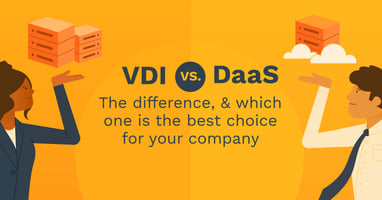In a post-pandemic world, cutting costs has been an ongoing endeavor for many businesses. Although most plan on taking advantage of best-in-class tools and technologies in the long run to save money, they still have to make some cuts in the short term.
For Chief Information Officers (CIOs), the dilemma lies in reducing costs without disrupting operations over the mid to long term. Organizations must have a well-defined and planned approach to cost optimization and control to ensure business continuity.
According to Gartner, 39% of Chief Financial Officers (CFOs) will concentrate on cost reduction if inflation remains high at the end of Q4 2022. In an effort to control operating costs, enterprises have started actively leveraging cutting-edge technologies and tried and tested strategies to reduce IT costs.
This approach allows companies to prioritize investments, reduce costs, and improve their bottom line. It's important as enterprises that fail to adopt this approach often end up laying off staff or risk going out of business.
What is IT Cost Reduction?
IT cost reduction is an approach companies use to reduce their IT overhead costs, often through process and resource optimization. Also called IT cost optimization, this methodology helps organizations eliminate sources of low business value, underutilization, and waste.
This approach helps companies develop cost reduction strategies that can trim the IT budget or be used to invest in new technology to support business growth. These cost-reduction strategies may involve streamlining the existing IT infrastructure, outsourcing specific IT services or tasks, and leveraging software-as-a-service (SaaS) solutions.
Properly executed cost-reduction strategies can lead to improved profitability and higher returns on technology investments. With that being said, let's move on to the specific techniques.
11 Ways to Reduce IT Costs
1. Outsource IT Staff and Services
Leveraging outsourcing staffing models is a popular approach adopted by IT leaders to cut IT labor costs while boosting productivity. Many digital businesses outsource their digitization services because the charges are directly related to deliverables.
If your entire workforce is on site, the labor costs will most likely be higher when the workload reduces. During these periods, when an organization has far more personnel than necessary, they still have to pay wages and related overhead expenses. Similarly, enterprises can also save by outsourcing infrastructure services following a pay-per-use model to minimize IT costs.
2. Migrate to the Cloud
Companies don't need to keep storage and hardware within the confines of on-premises data centers anymore. In fact, spending on rental services can be less expensive than purchasing since you only utilize resources when needed. Additionally, containers provide an added advantage as they enable customers to compare prices among cloud providers.
3. Minimize Storage Complexity
Businesses frequently employ a combination of on-site, public, private, and hybrid cloud storage models to decrease complexity and cloud costs associated with data storage. One other way companies tackle this issue is by deploying a metadata engine to link storage systems in a single worldwide namespace. For entities that haven't adopted virtualization just yet, this is an excellent place to begin when attempting to reduce IT spending.
4. Use Containers and Virtualize Servers
Not long ago, every application utilized an individual server. In this case, the addition of disaster recovery servers, test servers, and more would only exacerbate this. More often than not, many of these servers barely had any utilization; in other words, hardware costs were not being appropriately managed.
Virtualization is designed to swap physical hardware components with virtual ones. However, enterprises often fail to use these servers efficiently. By compartmentalizing low-functioning servers, IT departments can reduce hardware costs significantly. Additionally, companies can eliminate the necessity for physical servers by transitioning entirely to virtual servers, minimizing energy and hardware costs.
For those with dedicated servers, breaking them up and allowing multiple applications to use the same hardware can help companies save money. Going one step further with this thinking, containers are a great idea—particularly Linux containers. These are self-contained run-time environments that are lightweight and movable. By utilizing the same box for services, it reduces hardware expenses significantly.
Nowadays, database technology makes it possible to save a core image and design other databases that are merely rudimentary revisions of the core. For example, a full-scale test database may take up minimal capacity because it's linked back to the production instance.
In addition to reducing storage fees, this can be an astronomical productivity gain for developers. For example, consider the capability of archiving a database image, running a test cycle, changing mistakes, and then returning to the original image to rerun the test.
5. Focus on Discretionary and Nondiscretionary Costs
Even if it appears to be more accessible, reducing discretionary spending on new elements, additional abilities, and IT services shouldn't be the first thing IT departments turn to. Organizations can decrease nondiscretionary "run the business" expenses like IT structure and operations by using less or altering service levels.
6. Use Cheaper Hardware
Besides taking advantage of maximum hardware efficiency through containers, there is also an opportunity to run applications on inexpensive hardware. This approach was popular a few years ago with the emergence of powerful PCs that could be connected together to replicate the performance of high-cost, mid-range servers.
7. Reduce Software Licensing Costs
Rather than investigating the optimal approach to using IT resources, businesses typically take on a service provider's cloud plan. While strong technical ties are difficult to find, the actual expenses of sustaining some connections can be more damaging than advantageous.
For example, if a company requires the services of a provider who has the best product for their organization, but the provider can only conduct exchanges on a transactional basis, then that business should start utilizing a software asset management (SAM) tool to better align with their IT cost reduction strategies.
IT leaders can identify opportunities to economize on expenses on most software licenses, but only if they take the time to look them over. Negotiated software agreements typically include new costs reflecting some of the software and application changes.
Moreover, organizations often encounter situations where expensive software is being used for minor tasks—in this scenario, relocating to a new solution makes more financial sense.
Reducing the number of software licenses can result in minimal maintenance costs. When organizations sign an unlimited liability contract, software companies must take full responsibility for any possible program disruptions. This is possible because software vendors can run scripts remotely to detect software issues on the client's network.
8. Use Open-Source Software
Whenever possible, organizations should use open-source software to keep IT costs down. This approach helps companies avoid the initial outlay for procuring software and annual upkeep costs.
However, there is far more to the open-source model than financial gains. For example, with access to the source code, organizations can customize the application to better suit their business needs. Moreover, as developers from various companies conduct code updates, it also helps the software advance and evolves much faster than their commercial counterparts.
If you run into potential challenges, you will not be shackled to a specific software provider searching for relief; instead, numerous support avenues are available.
9. Manage Contractors and Vendors Effectively
There are times when contractor costs can unintentionally increase as they are typically viewed apart from other expenditures. For example, HR might be paying careful attention to internal staffing costs while focusing less on contractor costs.
In some cases, organizations utilize more costly contractors because they incorrectly perceive it as enhanced flexibility in varying business conditions. Although this is valid to an extent, companies shouldn't forget that getting rid of those with expertise specific to projects can be difficult.
To ensure that your organization stays mindful of contractor expenses, visibly publicize the number of contractors employed, how much you're paying them, and how many extra hours they work (an overlooked cost). Doing so will encourage IT departments to handle these resources better.
In the same vein, reduce expenditures by streamlining vendors providing equivalent business abilities. It's important to position vendor expenses with the strategic value or criticality of services, applications, or business projects they back.
Establishing responsibility throughout each department with a centralized insight into your total vendor portfolio is also important.
10. Embrace IT Automation
It's no secret that IT departments, especially at small businesses, are often overwhelmed. The good news is that automation much-needed relief. Organizations can benefit from increased productivity, minimum errors (which reduce overall IT costs), and improved revenue by automating IT and business processes based on established policies.
11. Take Time to Get It Right
Taking the time to plan, strategize, and execute a cost-cutting plan does pay off. For example, finding the best, if not the most cost-effective option, requires a significant investment in time spent on research and analysis. So, don't be in a hurry to reduce IT costs.
These IT cost-cutting initiatives help organizations optimize operations while minimizing IT-related expenses. It starts with an internal evaluation of current IT costs and evolves into research, analysis of metrics, and, finally, an execution of your IT cost-cutting strategy.
Categories: Office Automation, Automation, Cloud, Strategy, Cloud-based, IT Outsourcing, Managed IT Services, IT Management, Cloud Computing, Network, Digital Transformation, IT, Software











